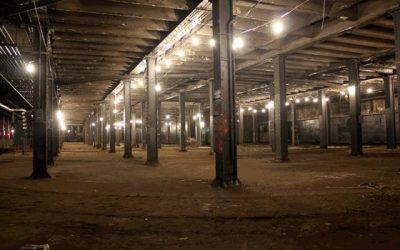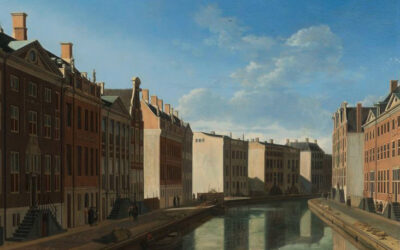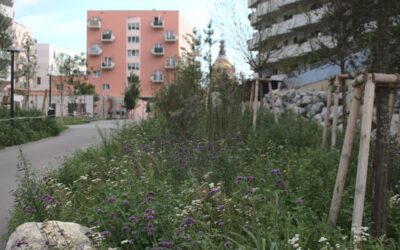News
THE LOWLINE AIMS HIGH
Click on images to enlarge them. They will appear in a new tab. After years of planning, another ambitious project rivaling the Highline in all its aspects, both good and bad – is being realized in New York City. It is called the Lowline and is located in Manhattan’s...
Building Greening and Fire Protection
An important topic! The City of Vienna recently introduced new subsidy regulations for the greening and unsealing of buildings - they are exemplary and will certainly lead to a surge in greening, especially in private buildings. And hopefully also provide an impetus...
More Money – More Green: Vienna’s New Funding Guidelines
Lecture by Jürgen Preiss, City of Vienna Now on the YouTube Chanal of BIOTOPE CITY JOURNAL https://www.youtube.com/watch?v=Y26cEdhyFcc&t=292s The Vienna City Council recently passed new subsidy guidelines for greening and unsealing buildings, which make it easier...
The production of the future: urban planning in civil society
This text was published in 1997 in the anthology ‘Zivile Gesellschaft’ (Civil Society) edited by Schmals/Heinelt. 25 years later, it is amazing how accurately the necessity of the urban development strategies outlined for solving urban problems were described back then – and at the same time it is shocking how little of the outlined solution strategies, having lost none of their validity, have penetrated into the reality of society and its planning. Yet such a form of planning would be more necessary than ever in order to put a stop to the problems of nature destruction with its biodiversity and climate change on the one hand and the increasing lack of natural resources and space on the other. It is worth reading!
Differentiated Cost-Benefit Analysis of the Effects of Urban Greenery
Which of the green-blue infrastructures, green roofs or façades, or perhaps trees, are the most effective means of climate adaptation, especially against the increasing overheating of our cities? Given the costs involved, which solution is the best choice?
On a Necessary Paradigm Shift From the CO2 Narrative to Water, Vegetation and Soil
Tuesday, May 28, 2024, 17.00 hrs - Webinar with Dr. Marco Schmidt, TU Berlin Climate change, rapid global urbanization, agricultural monocultures, the dramatic decline in biodiversity - these are all complex, mutually dependent processes. Dr. Marco Schmidt says: "The...
Regarder vers l’avenir – tirer les leçons du passé
Amsterdam 1671-1672 La 'baie d'or' du Herengracht. Peinture de Gerrit Adriaensz. Berckheyde, Gemeente Museum Amsterdam Le développement d'Amsterdam au 17e siècle comme paradigme de l'urbanisme bleu-vert et un exemple réussi à Vienne aujourd'hui Rien ne semble plus...
Looking back to the future – learning from the past
Amsterdam 1671-1672 The 'Golden Bay' of the Herengracht. Painting by Gerrit Adriaensz. Berckheyde, Rijksmuseum Amsterdam On the development of Amsterdam in the 17th century as a paradigm of blue-green urban planning and on a successful example in today's Vienna...
Towards an URBAN FUTURE: BIOTOPE CITY
Building the city of the future – a common saying. But what is really happening? Do we realise what the requirements of the future will be? Cities and city districts have to be built with a time horizon of centuries. We have to build the city of the future TODAY. But what does the future look like that we have to build for? What are its demands?
Vers l’AVENIR URBAIN: BIOTOPE CITY
La biodiversité menacée et l’expansion croisante des villem- quoi faire? Considérer la ville elle-même comme une forme de nature et donner de l’espace à la nature sous ses diverses formes dans l’environnement construit. C’est ‘voir la ville comme un biotope’, Biotope City. Conclure un contrat social avec la nature !
The Invasion of Nature into the City
Integrating biodiverse nature into urban areas: What is possible? What is desirable? How does one do it? Does it even make sense? Rules of the game for citizens and professionals in planning, design and maintenance. Prof.Dr. Helga Fassbinder, Foundation Biotope City...
Fire protection with facade greening
Dr. Dieter Werner, Testing, Inspection and Certification Body of the City of Vienna, Head of the Building Physics Laboratory Is facade greening a fire hazard? The City of Vienna has been investigating the fire behavior of facade greening since 2015. In the meantime,...
Interested in the Biotope City concept?
Need advice or information? Do you wish to contribute an article or news? Drop us a line.
Impressum | Copyright: Stiftung Biotope City










